On a drizzly morning in mid-March, Layla Salih and I sat in the back of a mud-splattered Toyota Land Cruiser, bound for Nineveh, the ancient Assyrian capital near Mosul in northern Iraq. We passed bombed factories and bullet-pocked houses, and then jolted up a hilltop on the eastern outskirts of the city. The mud-brick remnants of the purported tomb of the biblical prophet Jonah—dynamited to bits by the Islamic State in July 2014—sprawled in front of us. Muffled explosions from a battle between jihadists and Iraqi security forces reverberated across the Tigris River, two miles away. A police officer helped Salih—a round-faced woman wearing a floral hijab, black sequined sweater and sneakers—and me to climb over a slippery, muddy embankment. We kicked off the thick goo that clung to our shoes. Then Salih ducked down, squeezed into a four-foot-high tunnel and led me into the darkness.
Salih, the head of the Heritage Department at Nineveh Antiquities for Iraq’s State Board of Antiquities and Heritage, had first arrived at this site two weeks earlier, investigating a military report that the extremists had burrowed a tunnel under Jonah’s Tomb in search of buried antiquities. (Looted treasures constitute a lucrative source of revenue for ISIS.) On that visit, she had entered the tunnel—and soon found herself deep inside a lost 2,700-year-old Assyrian palace carved in the bedrock. Walls inscribed with cuneiform, a winged bull and a worn-away frieze of three robed women—all left intact because the militants apparently feared collapsing the tunnel if they tried to remove them—materialized out of the gloom. News of her discovery had rocketed around the world. Salih had been “incredibly brave...working in extreme danger, with the tunnel in danger of collapse at any time,” said Sebastien Rey, the lead archaeologist of the Iraq Emergency Heritage Management Program at the British Museum. He called the initial reports about her find “extremely exciting...[indicating] something of great significance.”
Now Salih had returned to show me what she had uncovered. We squeezed through winding passages illuminated only by Salih’s iPhone flashlight, sometimes crouching painfully on the hard-packed earthen floor to avoid smacking our heads on the low ceiling. Salih cast her light on an ancient well, and on a pile of blue uniforms in a corner. “They belonged to the prisoners who dug the tunnel,” she told me. I breathed in the musty air, fearful that the passageway might cave in at any moment.
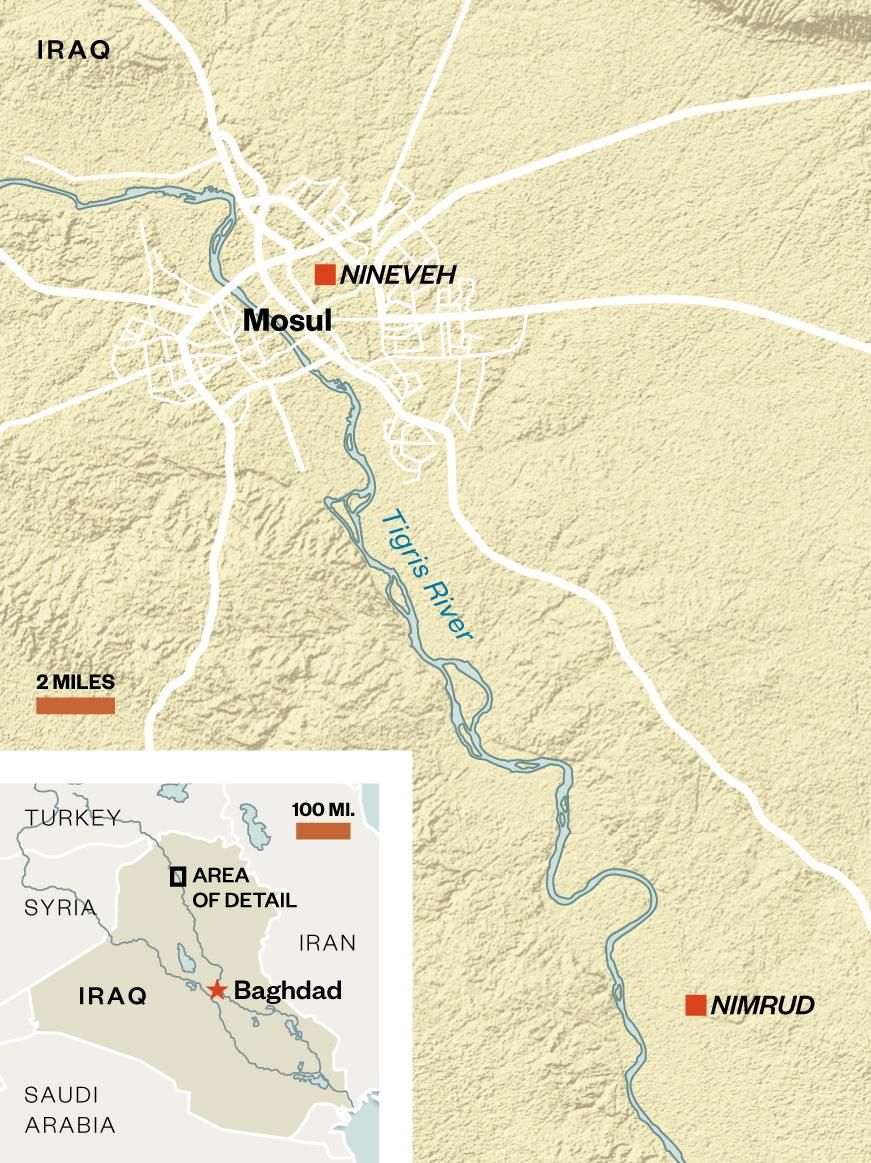
Then, barely visible in shadows from the pale stream of her flashlight, a gypsum wall inscribed with thousands of tiny, wedge-shaped characters appeared. Without an expert to guide me through the murk, I would easily have missed them; Salih had stumbled upon them while carefully probing the tunnel for statuary. We were gazing upon hitherto unseen traces of one of the world’s oldest writing systems, an intricate cuneiform alphabet, invented by the Sumerians of Mesopotamia some 5,000 years ago. Cuneiform provided a historical record of the kingdoms that had flourished in the Fertile Crescent, the intersection of the Tigris and Euphrates rivers, at the very dawn of civilization. Scribes had scrawled the epic tale of demigods and monarchs, Gilgamesh, in cuneiform using a reed stylus on clay tablets around 2,000 B.C.
Salih had already sent photos of some of the inscriptions to the chairman of the archaeology department at the University of Mosul, Ali al-Jabouri, a longtime colleague—“he is as fluent in cuneiform as I am in Arabic,” she said cheerfully—and received a translation. The writings confirmed that the palace had been built for King Esarhaddon, who ascended the throne of the Neo-Assyrian Empire in 680 B.C. after the assassination of his father, Sennacherib, and his defeat of his elder brothers in a civil war. His great accomplishment during his 11-year reign was rebuilding Babylon, the capital of a rival state that had flourished near today’s Baghdad, and restoring the statues of its gods after his father had razed the city.
This startling discovery was the latest in a series of daring rescue missions that Salih has embarked on since Iraqi forces began their offensive against the Islamic State in Mosul in October 2016. As a scholar specializing in the art and archaeology of the Abbasid caliphate, which ruled the Middle East from the eighth century until the Mongol conquest of Baghdad in 1258, Salih had spent much of her career ensconced comfortably in museums and libraries. But the war has thrust her overnight into a surprising new role—combat zone archaeologist, racing to save ancient artifacts and bear witness to the devastation that the jihadists have left behind.
Last November she was one of the first noncombatants after the retreat of ISIS to reach Nimrud, the ninth-century B.C. capital of the Assyrian kingdom, located on a plain overlooking the Tigris 20 miles south of Mosul. Salih documented the destruction, and implemented an emergency plan to protect the bulldozed, smashed remnants of the 3,000-year-old city.
The day before we met, she had traveled with Iraqi Federal Police escorts into western Mosul, where as many as 3,000 Islamic State militants were holed up for the final battle, determined to fight to the death. Dodging sniper fire and mortar blasts in a three-minute sprint down rubbled streets, she clambered through a hole that the terrorists had blasted into the Mosul Museum, a repository for the art of three civilizations spanning three millennia. Salih, a curator at the museum for a decade before the invasion, methodically documented the damage they had inflicted before fleeing.
Two limestone lamassus, huge winged bulls with human heads that had once guarded the palace of Nimrud, lay smashed into fragments, along with a limestone lion and tablets engraved with cuneiform verses and bronze remnants of the Balawat Gates from an Assyrian temple. The terrorists had cleaned out the Hatra Gallery, once filled with Greco-Roman-influenced marble statuary from Hatra, a pre-Islamic trading city on the major trading routes between the Roman Empire in the west and the Parthians in the east. They had also stolen 200 smaller objects—priceless remnants of the Assyrian, Akkadian, Babylonian, Persian and Roman empires—from a storage room. “I had had an idea about the destruction, but I didn’t think that it was this kind of scale,” said Salih, who had inventoried many of the artifacts herself over the years and knew precisely what had been stolen. After making her way to safety, Salih filed a report to the International Council of Museums (ICOM), a group that provides help to the United Nations and other international organizations in areas afflicted by war or natural disaster. The faster the word got out, she explained, the better the chances that the artifacts could be recovered. “Interpol can follow the [looted] objects across the Iraqi border,” she said.
This past January, Iraqi troops discovered a trove of 3,000-year-old Assyrian pottery stashed in a house in Mosul occupied by the Islamic State. Salih rushed into this combat zone after midnight to retrieve 17 boxes of stolen artifacts, including some of the world’s earliest examples of glazed earthenware, and arranged their shipment to Baghdad for safekeeping. “She is a very active person,” Muzahim Mahmoud Hussein, Iraq’s most famous archaeologist, who worked closely with Salih while serving as head of museums in Nineveh province before the Islamic State invasion, told me. “She has always been like that.” Maj. Mortada Khazal, who led the unit that recovered the pottery, said that “Layla is fearless.”
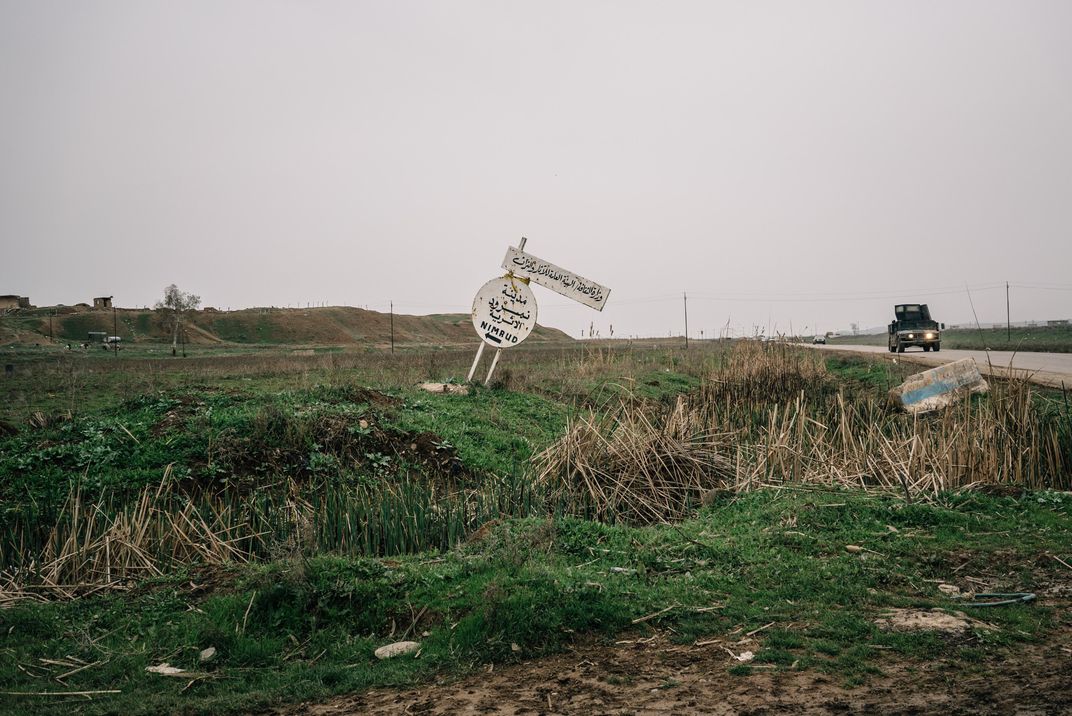
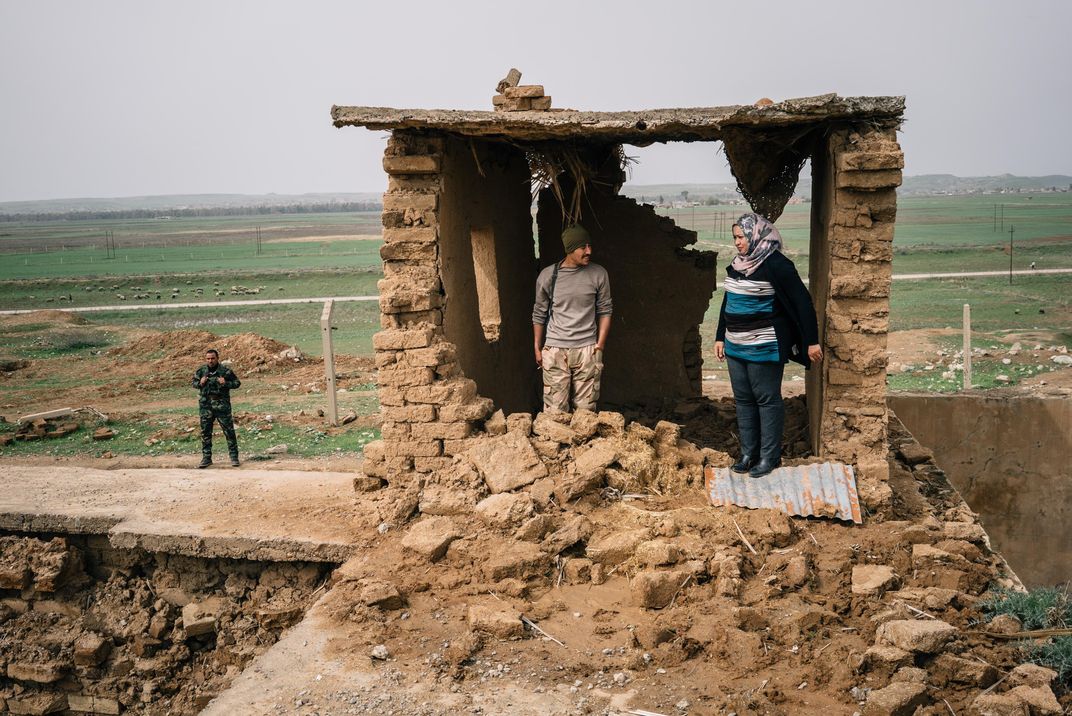
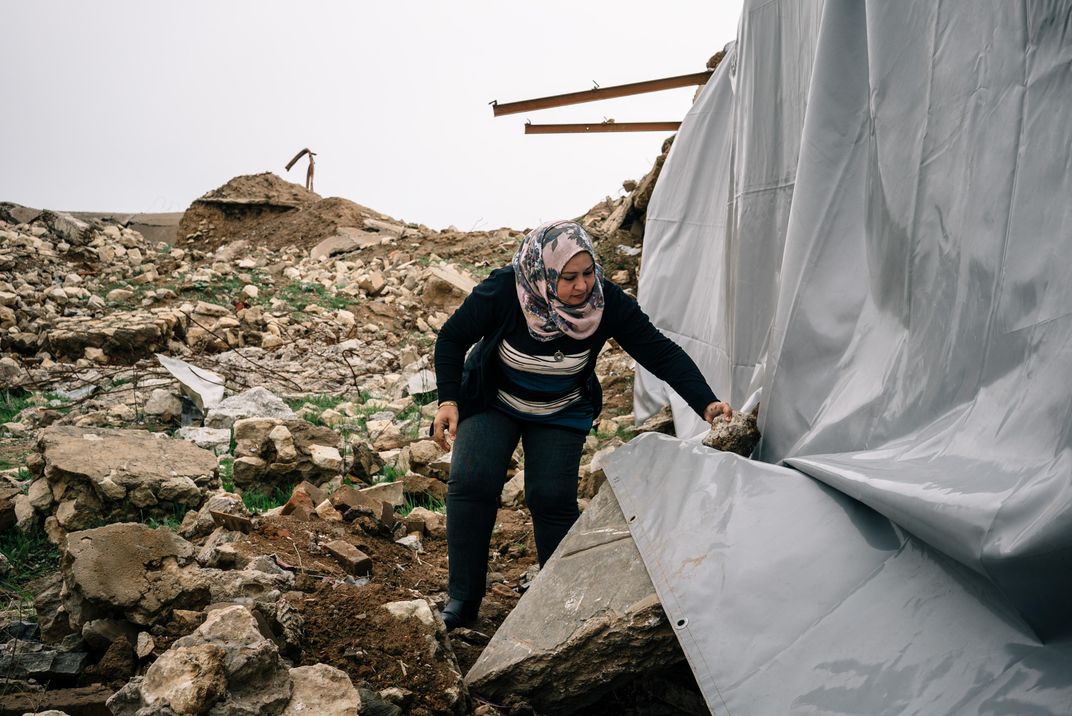
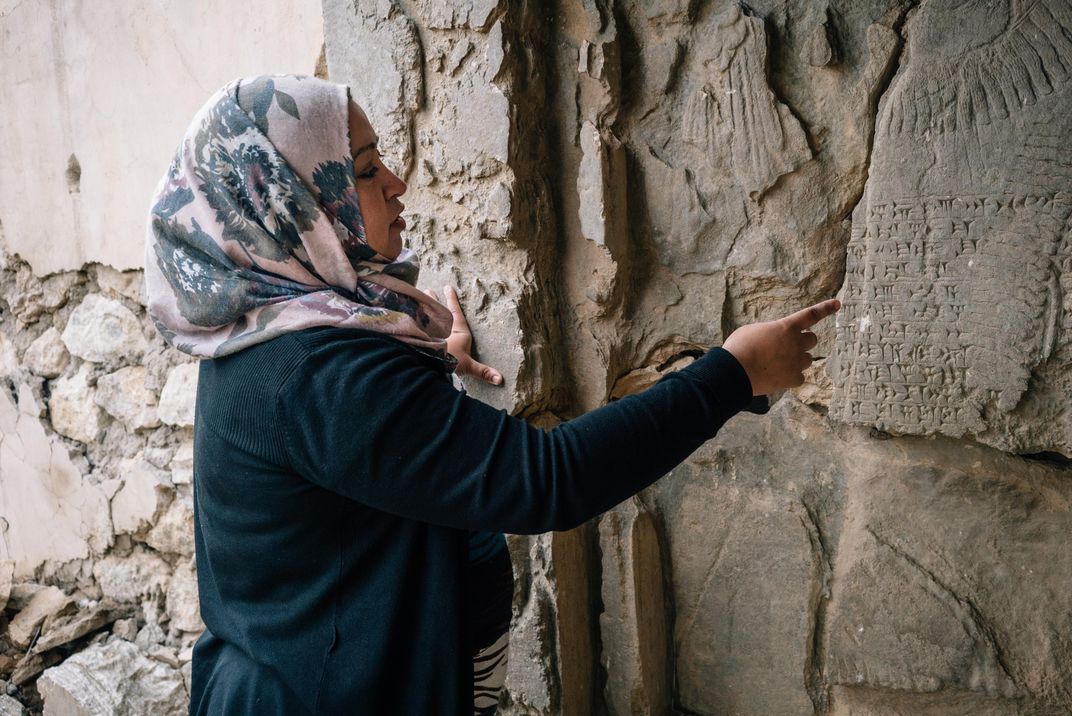
**********
In Erbil, the capital of Iraqi Kurdistan, on a sunny spring morning, I picked up Salih at the modest home that she rents with her twin sister and their disabled mother. “We have to live with our mother, because she is handicapped,” she told me, as we drove out of the sprawling oil-boom town of 1.7 million people. “That is one reason that I could never get married.” Sometimes, she admitted, “I feel it is a big sacrifice.” We entered the treeless plains of Kurdistan, passing tent camps for the displaced and checkpoints manned by the Kurdish forces known as the Peshmerga. Then we veered off the highway onto a dirt road, and went through more checkpoints, these run by a patchwork of ethnic and religious militias that had helped liberate areas east of Mosul. We approached a guard post manned by the Shia militia group known as al-Hashd al-Shaabi, identifiable by the colorful mural on their hut showing Imam Ali, the prophet Muhammad’s son-in-law. Salih, a Sunni Arab, tucked her hijab under her chin, Shia style, as a precaution. “To be honest, the Shia militia sometimes [treats] the people worse than the other groups do,” she said. The fighters smiled and waved us onward.
The dirt road wound up to a grassy plateau high above the Tigris River. Here lay the ruins of Nimrud, which had reached its apex under King Ashurnasirpal II around 860 B.C. Sometimes compared to the Valley of the Kings in Egypt for archaeological riches, the walled capital was an urban center with a complex irrigation system, a massive royal palace and a sprawling temple complex. Both were decorated with winged-bull guardians at the gates and magnificent friezes—bearded archers, charioteers, angels—on the alabaster and limestone walls. Cuneiform inscriptions described a luxurious enclave filled with Edenic splendors. “The canal cascades from above into the [palace] gardens,” declared the Banquet Stele, a sandstone block containing a 154-line inscription and a portrait of the king. “Fragrance pervades the walkways. Streams of water [numerous] as the stars of heaven flow into the pleasure garden.”
The British archaeologist Austen Henry Layard conducted the first large-scale excavations of the site in the mid-19th century. A hundred years later, Max Mallowan and a team from the British School of Archaeology in Iraq conducted additional excavations, often joined by Mallowan’s wife, the crime novelist Agatha Christie. Then, in 1988, Muzahim Mahmoud Hussein and his team began digging in the same area that Mallowan had excavated—the domestic wing of the Northwest Palace—and revealed the full glory of Nimrud to the world. Here lay the stone sarcophagi of Assyrian queens, including the wife of Ashurnasirpal II. Hussein, the first to locate and excavate the Queens’ Tombs, found they contained a remarkable array of gold, jewels and other objects weighing more than 100 pounds. “It was my greatest discovery,” he told me with pride.
Saddam Hussein summoned Muzahim to his palace in Baghdad to thank him. Today the riches are stored in the Baghdad Central Bank, and have been publicly displayed only twice—in the late 1980s and again briefly during the chaos that followed the 2003 U.S. invasion, to reassure the public that they had not been stolen.
A young police officer from modern Nimrud, a riverside village just down the hill, approached Salih and me as we waited outside a white military tent for an escort to the ruins. He said he had been guarding the ancient capital in October 2014, four months after the occupation began, when 20 Islamic State fighters arrived in four vehicles. “They said, ‘What are you doing here?’ We said, ‘We are protecting the site.’ They screamed, ‘You are the police! You are infidels.’ They beat us, whipped us, and took our money.” Later, in October 2016, he adds, “They came with bulldozers, and they knocked down the ziggurat.” He gestured to a truncated lump a few hundred yards away, the remains of a towering mud-brick mound dedicated by Ashurnasirpal II to Ninurta, a god of war and the city’s patron deity. “It was 140 feet high, and now it is one-quarter of that size,” the officer said. “It is very painful for us to talk about [the destruction]. This provided people with a living, and it was a source of pride.”
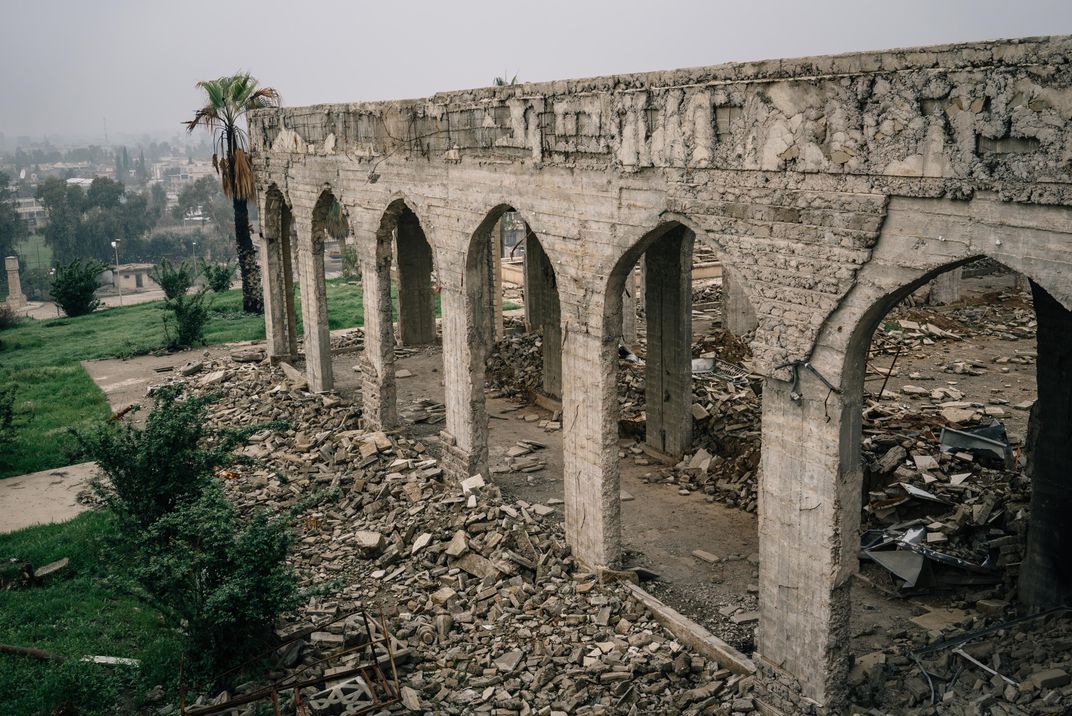
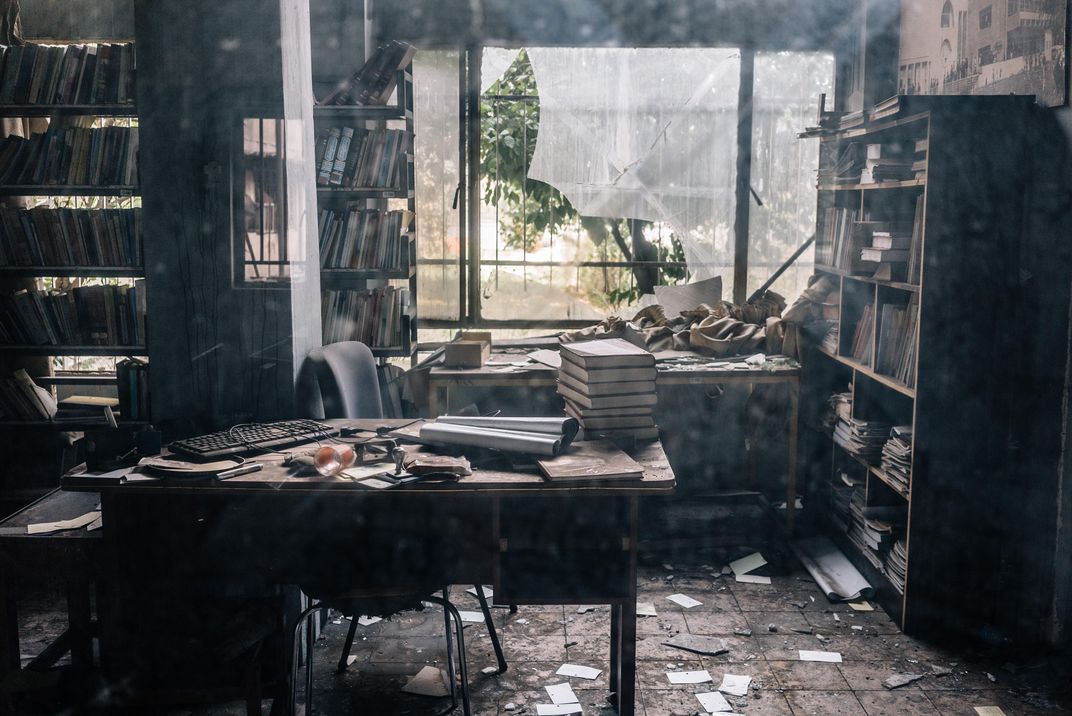
In March and April 2015, the Islamic State bulldozed the ancient wall surrounding the city, dynamited the palace, and hammered to obliteration nearly all the friezes that had covered the palace’s brick walls. They also smashed to pieces the site’s lamassus—the statues that guarded the entrances to palaces and temples. (Most had been carted off by archaeologists to the Louvre and other major museums.) “We had a colleague in Nimrud updating us with information about the site,” Salih told me. “Day after day he would give us news. It was so dangerous. He could have been killed.” On the 13th of November, Iraqi forces recaptured Nimrud. “I got a chance to visit this site six days later,” Salih told me. “It was massive destruction.”
Trudging along the windswept mesa with four soldiers, Salih pointed out an expanse of broken brick walls, and heaps of stone fragments partially concealed by plastic sheeting. Salih had laid the sheathing during previous visits, a rudimentary method, she said, for protecting rubble from the elements. I caught a glimpse of a stone arm, a bearded head and a sliver of cuneiform on a broken frieze, all that was left of some of the grandest pre-Islamic art in the world. The winds had ripped away covers and exposed pieces of bas-reliefs; she covered them, and weighted down the tarps with stones. Salih pointed out one relief clinging to a wall: a winged deity carrying a pine cone and a bucket, objects apparently used in an Assyrian sacred ritual. “This is the last frieze that wasn’t chiseled away,” she said.
Salih insisted that all was not lost. “Finding all this rubble was actually a positive sign for us, for reconstruction,” she said. In fact, the Smithsonian Institution had signed an agreement with the Iraqi Ministry of Culture’s State Board of Antiquities and Heritage to assist in the future reconstruction of Nimrud. “The first priority is to build a fence around it,” Salih told me as we walked back to our vehicle. “We must keep the rubble in storage, start the restoration, and rebuild the wall. It will take a long time, but in the end, I am sure we can do something.”
**********
Long before she began documenting the Islamic State’s depredations, Salih was well versed in her country’s cultural heritage. The daughter of a soldier turned shopkeeper in Mosul, she first saw Nimrud as a 14-year-old, picnicking with her class beside the ancient city. Though she was struck by the “huge winged figures” guarding the palace gates, she mainly recalls being bored. “I remember running around with the other kids more than seeing the site,” she says with an embarrassed laugh. Even in subsequent visits with her parents as a teenager—a springtime ritual for Mosul families—she remained ignorant about Assyrian civilization. “There were no TV programs, no information about our heritage, so we had no idea what we were seeing.”
Eventually she found a book about Nimrud in the school library, and read whatever she could find about excavations in the Middle East. She caught the bug. As she approached high school graduation, she resolved, “One day I will become a professional archaeologist.” Salih’s determination was met mostly with ridicule from neighbors and acquaintances. “Mosul is not open to the idea of women having professional lives, except for being a teacher or doctor,” her brother-in-law, Ibrahim Salih, a surgeon, told me. “Archaeology especially involves a lot of outdoor work with men, so it is frowned on.” The typical thinking of many of her neighbors, Layla Salih said, was “Why are you studying all night? Why don’t you get married and have children?”
The Bad-Ass Librarians of Timbuktu: And Their Race to Save the World's Most Precious Manuscripts
In the 1980s, a young adventurer and collector for a government library, Abdel Kader Haidara, journeyed across the Sahara Desert and along the Niger River, tracking down and salvaging tens of thousands of ancient Islamic and secular manuscripts that were crumbling in the trunks of desert shepherds. His goal: to preserve this crucial part of the world’s patrimony in a gorgeous library. But then Al Qaeda showed up at the door.
But Salih’s father encouraged his six daughters—he also had seven sons—to defy Mosul’s conservative mores and pursue their ambitions. An older sister, Khawlah, would graduate from law school and become Nineveh state’s director of housing; Salih’s twin sister, Khalidah, would become a geologist. “There was something of a competition among us,” Salih told me.
After earning a bachelor’s degree in archaeology at Baghdad University, Salih was hired as a curator for the Mosul Museum. Salih had barely started the job when the George W. Bush administration began preparing to invade Iraq in 2003. Anticipating a breakdown of authority, in three days she and her colleagues packed thousands of valuable artifacts in crates, sent them to Baghdad for safekeeping, and closed the museum just before U.S.-led coalition bombing began. (The museum suffered some looting, but lost few artifacts.) Salih kept a low profile in Baghdad, continuing her studies. Eventually she would complete a master’s degree in archaeology there, before returning to Mosul.
The insurgency took a toll on her family: A car bomb killed one of her brothers in 2007. Two militants gunned down her sister Khawlah, the government’s housing chief, in front of her home one morning in February 2011. “I was preparing for work, and I heard some shooting not far from the house. As usual I thought, ‘Who has been killed this early in the morning?’” she recalls. A few minutes later Khawlah’s driver phoned and said that she had been shot. “My brother and I ran to the scene, and tried to wake her, but she had passed away. She had gotten death threats. We knew it was Al Qaeda.” (The terrorist group targeted women holding government positions.) The shooting left the family “traumatized,” she said, struggling to keep her composure. “When Daesh came, it brought everything back. We could not bear anymore.”
The Islamic State—often known by the disparaging Arabic term Daesh, roughly translated as “one who crushes all underfoot”—arrived in Mosul from Syria in June 2014. Salih was halfway through a survey of 200 historic buildings on the west bank of the Tigris when Iraqi government troops appeared in the streets and ordered everybody to go home. “In a couple of hours the streets were empty,” she remembers. “We sat indoors and waited. After five days Daesh declared control of the city.” Soon, they began arresting people, including her direct supervisor, and executed soldiers and police. Salih and her family tried to avoid them. But her brother-in-law Ibrahim aroused the jihadists’ wrath after refusing to operate on a Daesh official ahead of his other patients. The official “became very angry, shouting at me, ‘You treat the policeman, the army man, the kaffirs, and we are the Islamic State,’ ” he recalled. “I told him ‘You are terrorists.’” After the militants blew up a Sufi shrine in June, Salih attended a tense meeting at the museum with a Daesh official. “We said, ‘Please do not destroy the heritage, don’t make the buildings a target.’ And he refused any negotiation,” she said.
On August 14, 2014, Salih and her extended family held a meeting in their home to vote on whether to remain or flee. Her octogenarian mother, who could barely walk, begged them to stay. (Salih’s father had died in 2000.) But the other adults recognized the perils that lay ahead. The next day, all 50 family members, from 6 months to 80 years old, piled into a ten-car convoy and drove out of Mosul. The family wanted to go to Kurdistan, which has achieved de facto autonomy since the U.S. invasion, but Kurdish authorities initially banned Sunni Arab refugees. Instead Salih traveled with the clan to Kirkuk, and then settled with a sister in Baghdad. Working for the Ministry of Culture, she monitored the museum and ancient sites via Facebook and phone calls. But in 2015, “Daesh cut the phone lines, and punished any person who used a mobile phone,” she recalls. One by one, she lost contact with co-workers. Her supervisor remained in prison for nearly three years until he was liberated in February. The majority of her colleagues remained behind enemy lines in west Mosul, where the fighting continued.
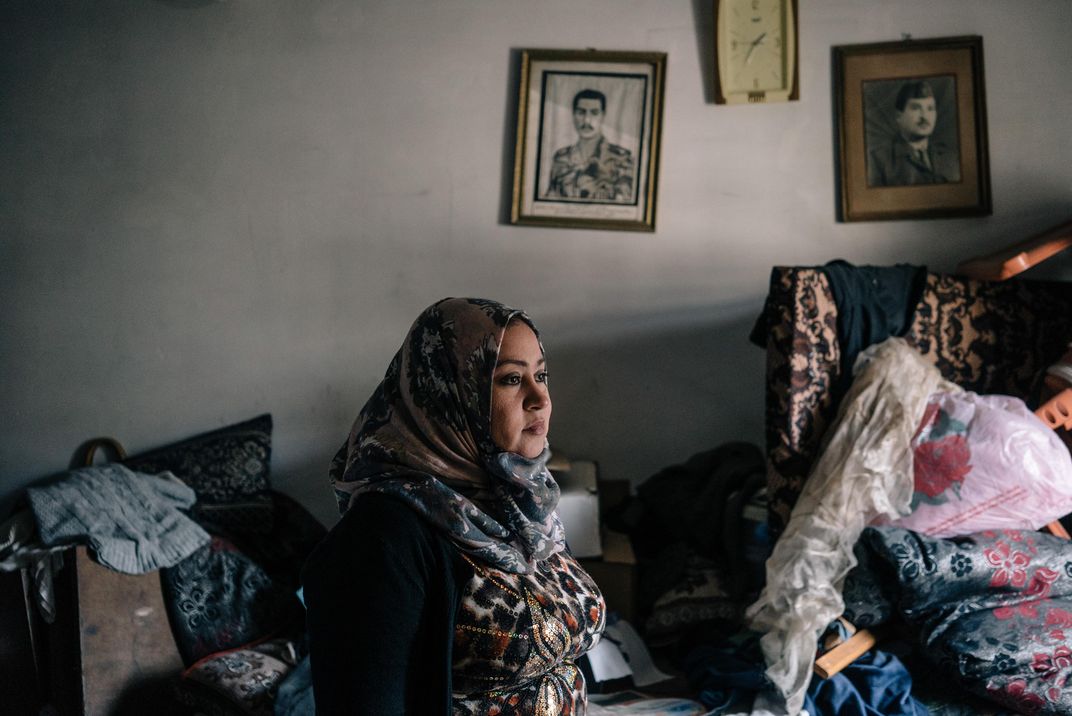
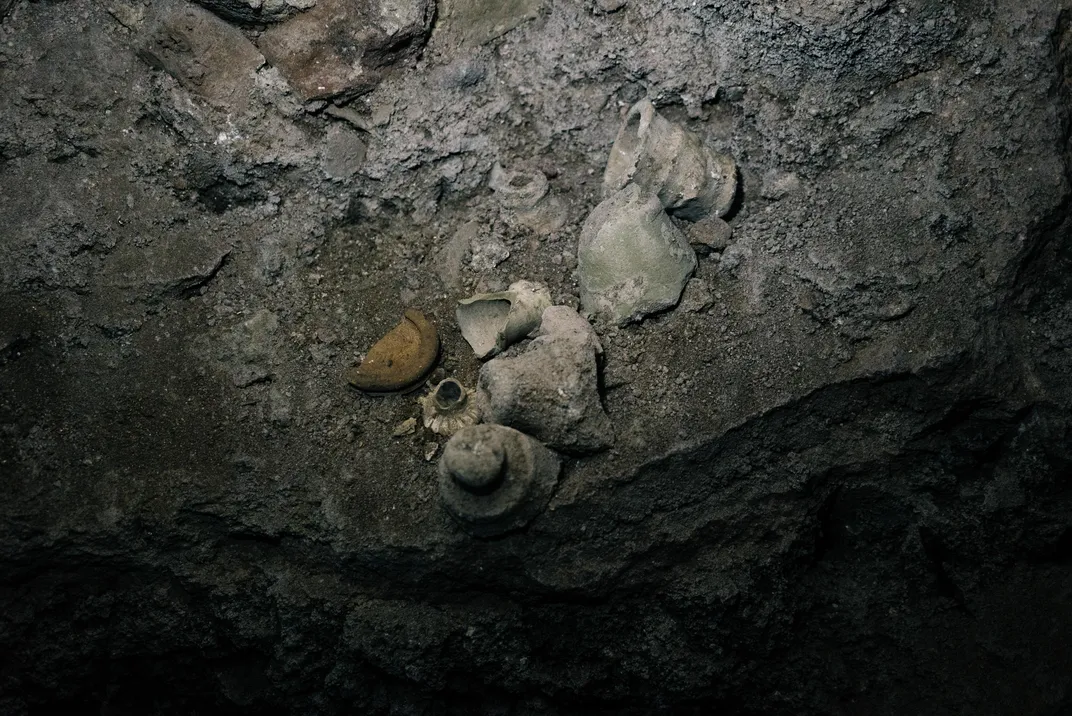
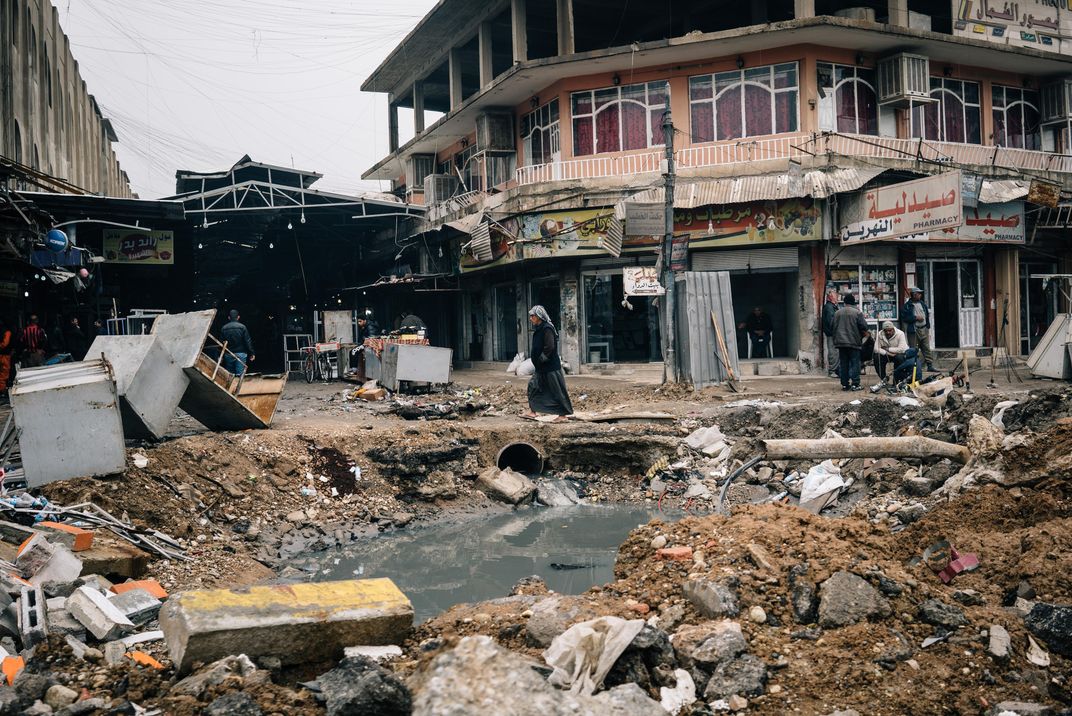
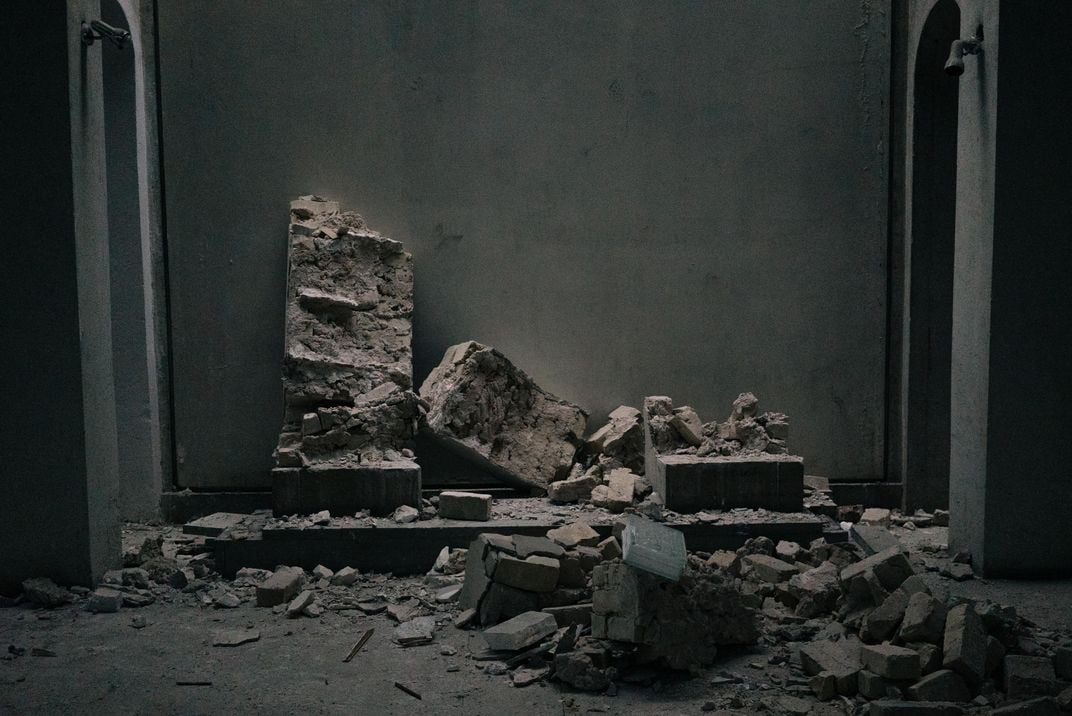
In mid-2016, after the Kurds relaxed their ban on Sunnis, she relocated to Erbil, the Kurdish capital; the rest of the family soon joined her there. Salih offered her services to the Nineveh province governor, a family acquaintance who had set up a headquarters-in-exile there after the occupation of Mosul. “When I told him I had an English degree plus archaeology, he was so happy,” she said. “He welcomed me to work in his office.”
Salih was directing an Arabic-language workshop on post-conflict monument rehabilitation, in Sharjah, one of the United Arab Emirates, when the Mosul offensive began on October 17; she had just landed in Amman, the Jordanian capital, when the Iraqis took back Nimrud. A few days later, the governor, with the enthusiastic endorsement of Unesco, dispatched her to survey the ancient site and assess the damage. “Almost all of my colleagues were trapped in Mosul,” she says. “I was the only one who was free.” Salih told me that she has segued into her new role with relative ease. “I know the city well, I have 17 years with the antiquities department,” she said. “I am not scared of land mines, tunnels or fighters.”
**********
The day after our inspection of Nimrud, I set out with Salih on another fact-finding mission. She was on assignment from the Gilgamesh Center for Antiquities and Heritage Protection, an Iraqi nonprofit group, to survey Christian towns east of Mosul that the Islamic State had singled out for vandalism and destruction. No civilian observers had dared enter these towns to quantify the damage and determine priorities for reconstruction since the extremists evacuated them months earlier, and Salih had eagerly volunteered for the job. We entered Qaraqosh—now a ghost town—and made the rounds of seven Roman Catholic and Syriac Orthodox churches that the Islamists had burned, and in some cases, turned into suicide-bomb factories. In one, we stepped cautiously across a floor littered with bags of potassium nitrate and piles of white C-4 explosive powder. “They must have left in a hurry,” Salih noted, sidestepping an empty mortar shell.
Then Salih directed the driver to Al Wada, a middle-class East Mosul neighborhood of streets shaded by date-palm trees. We stepped out of the vehicle in front of a two-story, dun-brown concrete house surrounded by a low wall: Salih’s family home, occupied by Daesh fighters until a month earlier. A young caretaker named Hassan was standing in front, waiting for us. “Salaam Aleikum (Peace be upon you),” he said, leading us through the gate. Hassan, who lived across the street, had remained in the neighborhood throughout the occupation. He lifted his shirt to show a glimpse of scars from 75 lashes he had received for smoking. “They put me in jail for eight days,” he told me. When Iraqi forces moved into Al Wada, the Islamic State retreated without a fight, though Hassan just missed being shot by government snipers when he stuck his head out a window to watch their arrival.
Salih’s home, the sanctuary where she and her 12 siblings had been raised, where she had nurtured dreams of becoming an archaeologist, and hunkered down during the U.S. and Islamic State invasions, had been trashed. Waterlogged cardboard boxes, jerrycans, collapsed chairs, a broken crib and a rusting bread oven encrusted with charcoal littered the courtyard. Broken furniture, lamps and other junk filled the entrance hall, heaped like the wreckage after a tornado. Salih climbed the stairs, pushed open a door and gazed at more debris: piles of clothing, a rusted refrigerator, a smashed sewing machine, a cuckoo clock, stained mattresses. “This is my bedroom. Imagine what happened here,” she said. I asked her what she thought had motivated the Daesh fighters to violate her home this way. “They must have been searching for something, but I don’t know what,” she said, shrugging.
Amid the vandalism, I noticed a pair of framed photographs of two young men in army uniforms hanging, inexplicably untouched, on the wall. I asked Salih who they were. One, she said, was her father. The other portrait showed her oldest brother, Nadhim, a commander in the Iraqi Special Forces. “He passed away,” she told me, at the Battle of Al Faw in 1986, one of the bloodiest confrontations of the Iran-Iraq War. He was the first of three of Salih’s siblings to die in the country’s unending cycles of violence.
**********
We drove down the road to the University of Mosul, where she had spent her freshman year, from 1997 to 1998. “I studied the Assyrian period here, before going to Baghdad and specializing in the Abbasid caliphate,” she told me. The fighting here had been intense: The jihadists had used administrative buildings as strongholds during their last stand in eastern Mosul, and air strikes had blown apart their sanctuaries with terrifying force. Troops escorted us past a ten-story structure that had been cleaved in half by seven rockets. The acrid smell of smoke from the library, torched by the terrorists before fleeing, lingered. Salih walked pensively down a paved walkway littered with rubble, silently taking in the utter ruin of the institution that had shaped her life. Then, as we neared the folklore museum, across the plaza from the library, she snapped back into action; Salih was eager to survey the building for the Nineveh governor and record the damage the militants had inflicted.
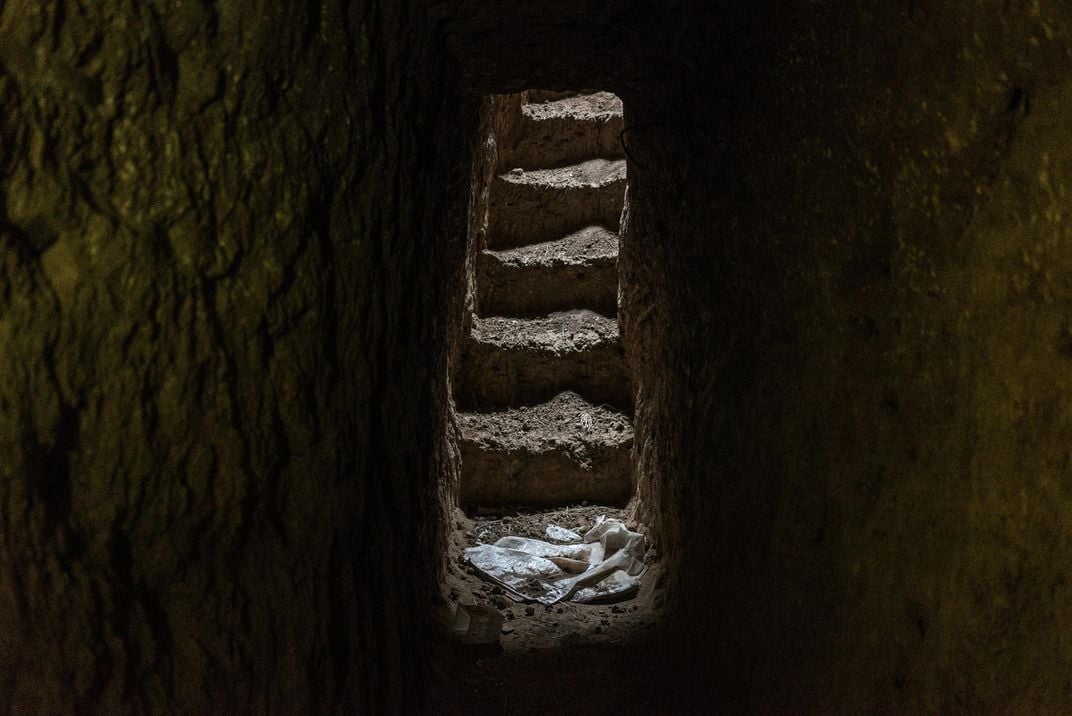
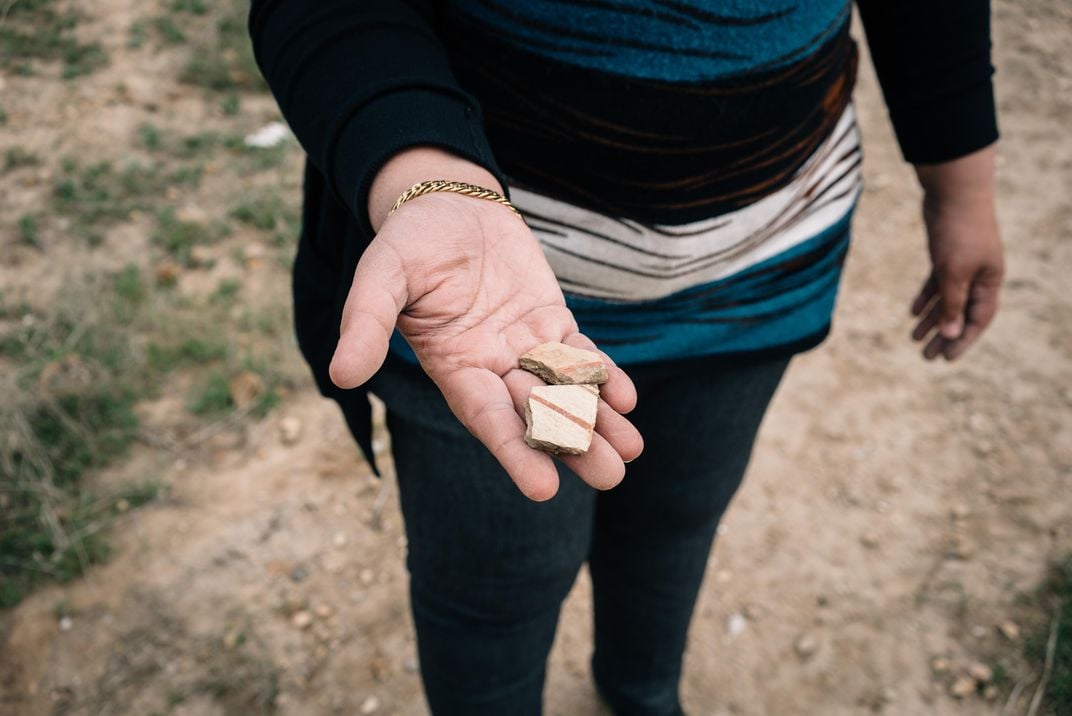

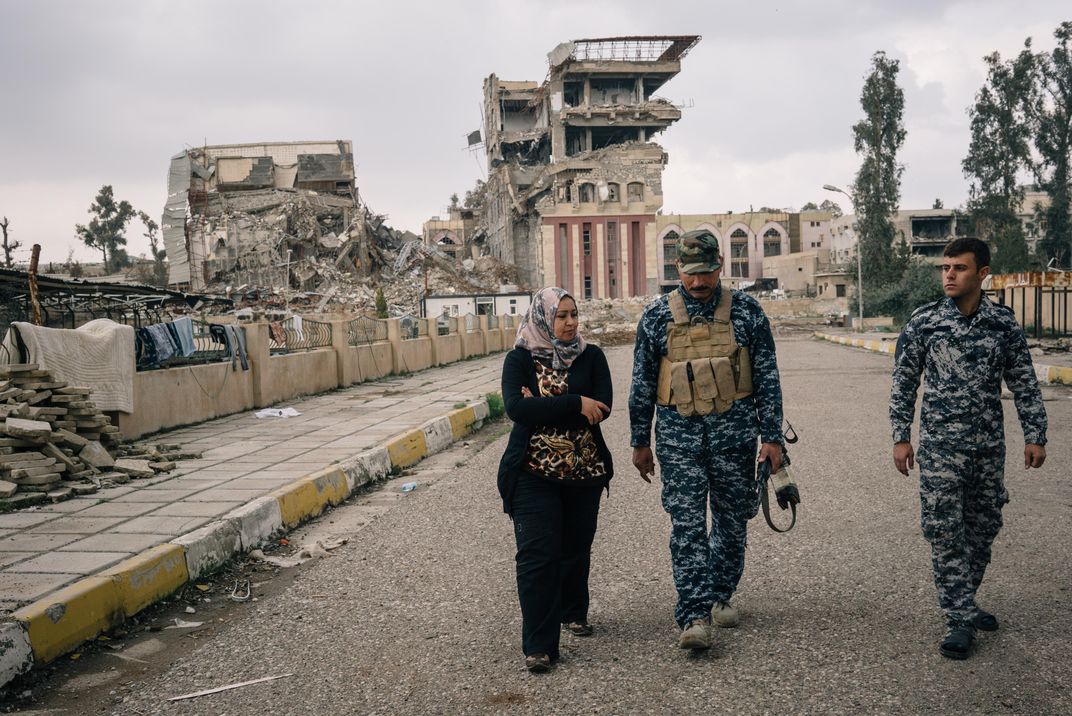
“Don’t go in yet. It’s too dangerous. We haven’t checked it yet,” warned a bulldozer driver who was pushing rubble left in the road by missile strikes. The Islamic State had often planted booby traps in buildings before abandoning them, and soldiers and civilians have been killed wandering into structures that hadn’t been cleared.
Salih ignored him.
“Come on,” Salih told me, bounding up the staircase, ducking underneath a dangling wire. She cut a fearless, even reckless figure as she strode down the corridors, taking notes. We entered a gallery lined by dioramas portraying traditional Mosul life. Daesh had ripped off the heads of every mannequin; decapitated fiberglass and plastic bodies littered the floor. “They smashed just the heads,” she said, “because they don’t like representations of the human form.”
As we stepped outside, a gunshot cracked, unnervingly close by. Then an Iraqi combat helicopter swooped in and circled high over our heads. Salih and I watched, rapt, as it spat flames and fired a dozen missiles at Daesh positions across the river. An apocalyptic battle was looming in the warrens of Mosul’s Old City, a quarter packed with some of the glories of the Abbasid era.
Beside the terrible toll on human life that was rapidly mounting—at least 100 Iraqi civilians had been killed in a coalition air strike days earlier—historic treasures were at risk: The 13th-century Qara Serai, or Black Palace. The 850-year-old brick minaret at Mosul’s Great Mosque of al-Nuri, where the Islamic State leader Abu Bakr al-Baghdadi had proclaimed victory in July 2014. Large swaths of western Mosul had already been razed, and further destruction of its priceless cultural heritage seemed inevitable.
Over the next few months, the battle would rage block by block in the warrens of the Old City. In late spring the Islamic State drove Iraqi government troops from the Mosul Museum and reoccupied the complex. In June, with Daesh down to its last few holdouts, the terrorists blew up the ancient brick minaret, as Salih had feared. Iraqi Prime Minister Haider Al-Abadi officially declared victory in Mosul on July 10, though pockets of resistance remained. Hundreds of civilians had perished in the fighting, and civilians were still trapped in the ruins.
Salih watched it all from the sanctuary of Amelia, Italy, a town about an hour’s drive north of Rome, where she joined a dozen other archaeologists and preservationists from around the world as a fellow of the Association for Research into Crimes against Art (ARCA), an interdisciplinary research group and think tank. Between May and August, as the fight for Mosul reached its final phase and then wound down, she was taking a needed break attending workshops and lectures, learning about pursuing stolen antiquities across international borders and dealing with Interpol and suspect auction houses. During her down time, she tried to assess the damage to Mosul from afar, examining satellite images and videos posted on YouTube, consulting by WhatsApp and Facebook with colleagues who had just been liberated. (None of her fellow staff members at the Mosul Museum, she was relieved to discover, had been killed in the fighting.) “Not everything of value has been destroyed,” she told me a week after Al-Abadi’s victory declaration. “But I can estimate the destruction is 65 percent.”
Salih had another month to go—and a thesis to write—before she returned to the fray. This time she would be working full time for the Nineveh Governorate, doing a survey of the destruction in Mosul’s Old City and at the same time devising a “first aid” plan for wrecked churches in Qaraqosh and other Christian communities located in the province. Salih sounded as resolute as she had four months earlier, when the battle was still going strong. “I’m just waiting for the fighting to die down so I can go in there to assess the damage,” she had told me back then, as we watched the Iraqi combat helicopter sweep over the city. “We are going to have a lot of work to do.”
A Note to our Readers
Smithsonian magazine participates in affiliate link advertising programs. If you purchase an item through these links, we receive a commission.
/https://tf-cmsv2-smithsonianmag-media.s3.amazonaws.com/filer/b9/99/b9997170-bad9-4593-9b7f-1669adf5aad2/oct2017_f06_mosul.jpg)
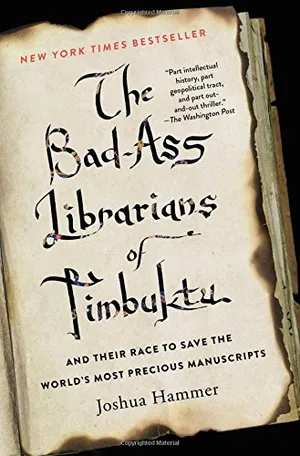
/https://tf-cmsv2-smithsonianmag-media.s3.amazonaws.com/accounts/headshot/Screen_Shot_2021-09-15_at_12.44.05_PM.png)